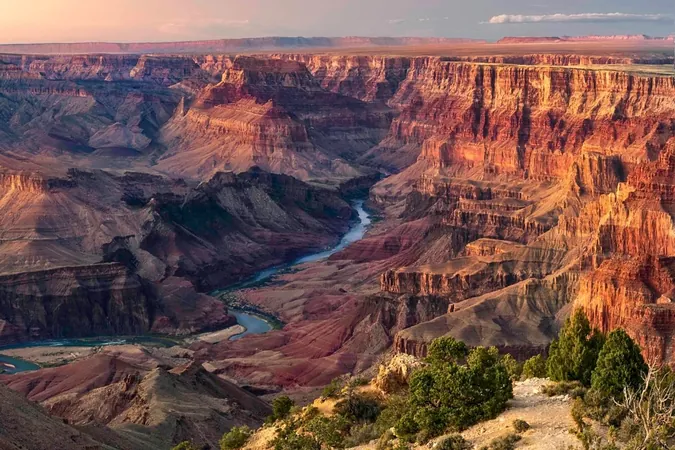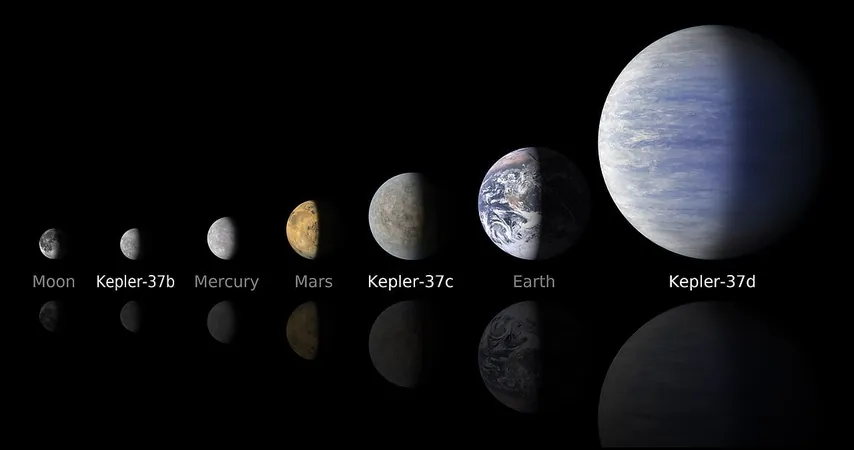
Jaw-Dropping Discovery: Ancient Fossils Unearthed in the Grand Canyon!
2025-07-24
Author: John Tan
Unveiling a Hidden Treasure of the Past
In a groundbreaking revelation, scientists have stumbled upon an astonishing collection of fossils that are half a billion years old, nestled within the iconic Grand Canyon of Arizona. This remarkable find is not just any fossil discovery; it marks the first of its kind from this renowned geological wonder.
Among the treasures are brilliantly preserved remnants of ancient marine life—including rock-scraping mollusks, filter-feeding crustaceans, and uniquely toothed worms—along with the remnants of their meals.
A Leap Back in Time: The Cambrian Explosion
These fossils date back to a crucial period in Earth’s history known as the Cambrian explosion, where the foundations of major animal groups were laid. Insights from this discovery, recently published in the esteemed journal Science Advances, shine a light on the origins of early life on our planet.
An Expedition to Remember
The astonishing fossils were brought to light during a 2023 expedition along the Colorado River, which has carved the Grand Canyon over the past five to six million years. Focused on muddy rock layers that might hold delicate structures, researchers painstakingly extracted samples from the canyon's walls.
Microscopic Marvels
Once back in Cambridge, UK, these rocks underwent chemical analysis using hydrofluoric acid, revealing thousands of microfossils with breathtaking anatomical detail. Though researchers did not recover complete specimens, what they found—evidence of feeding limbs, teeth, and body fragments—was enough to classify these ancient beings.
Meet the Ancient Crustaceans!
Among the standout discoveries were crustaceans reminiscent of today’s brine shrimp. These tiny creatures utilized hair-like limbs to draw food into their mouths, equipped with molar-like teeth to grind down particles—their meals still visible near their mouths!
A New Species Unveiled!
Another remarkable find was a new species of priapulid, whimsically named Kraytdraco spectatus, after the fierce krayt dragon from Star Wars. This intriguing worm featured hundreds of complex teeth-like structures around its mouth, adeptly designed for capturing food in its watery environment.
A Rare Treasure Trove
Lead author Giovanni Mussini emphasized the significance of this discovery, noting that such soft-bodied creatures are rarely found in the fossil record, which typically favors hard-shelled organisms. Sites with this level of preservation are few, making the Grand Canyon find a monumental addition to our understanding of the Cambrian period.
A Rich Ecosystem Revealed
These exceptional fossils portray a vibrant, competitive ecosystem thriving during the Cambrian. According to Mussini, the Grand Canyon back then was a shallow equatorial sea—a perfect "Goldilocks zone"—where oxygen and nutrients flourished, fostering evolutionary innovations.
The conditions encouraged early animals to develop complex traits and intricate feeding strategies, paralleling economic theories of risk-taking in times of abundance.
A Milestone in Evolutionary Understanding
This striking discovery not only fills significant gaps in the fossil record but also helps scientists piece together how one of our planet's first complex ecosystems functioned. As Mussini concludes, these findings represent a crucial step in comprehending the evolutionary steps that shaped life on Earth.


 Brasil (PT)
Brasil (PT)
 Canada (EN)
Canada (EN)
 Chile (ES)
Chile (ES)
 Česko (CS)
Česko (CS)
 대한민국 (KO)
대한민국 (KO)
 España (ES)
España (ES)
 France (FR)
France (FR)
 Hong Kong (EN)
Hong Kong (EN)
 Italia (IT)
Italia (IT)
 日本 (JA)
日本 (JA)
 Magyarország (HU)
Magyarország (HU)
 Norge (NO)
Norge (NO)
 Polska (PL)
Polska (PL)
 Schweiz (DE)
Schweiz (DE)
 Singapore (EN)
Singapore (EN)
 Sverige (SV)
Sverige (SV)
 Suomi (FI)
Suomi (FI)
 Türkiye (TR)
Türkiye (TR)
 الإمارات العربية المتحدة (AR)
الإمارات العربية المتحدة (AR)